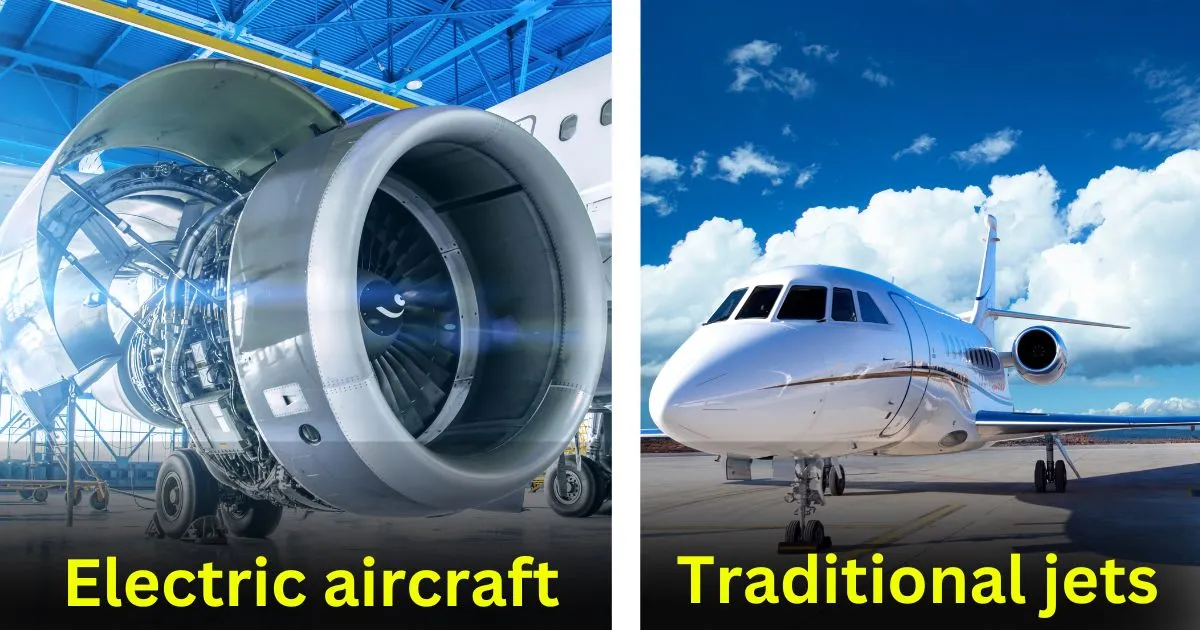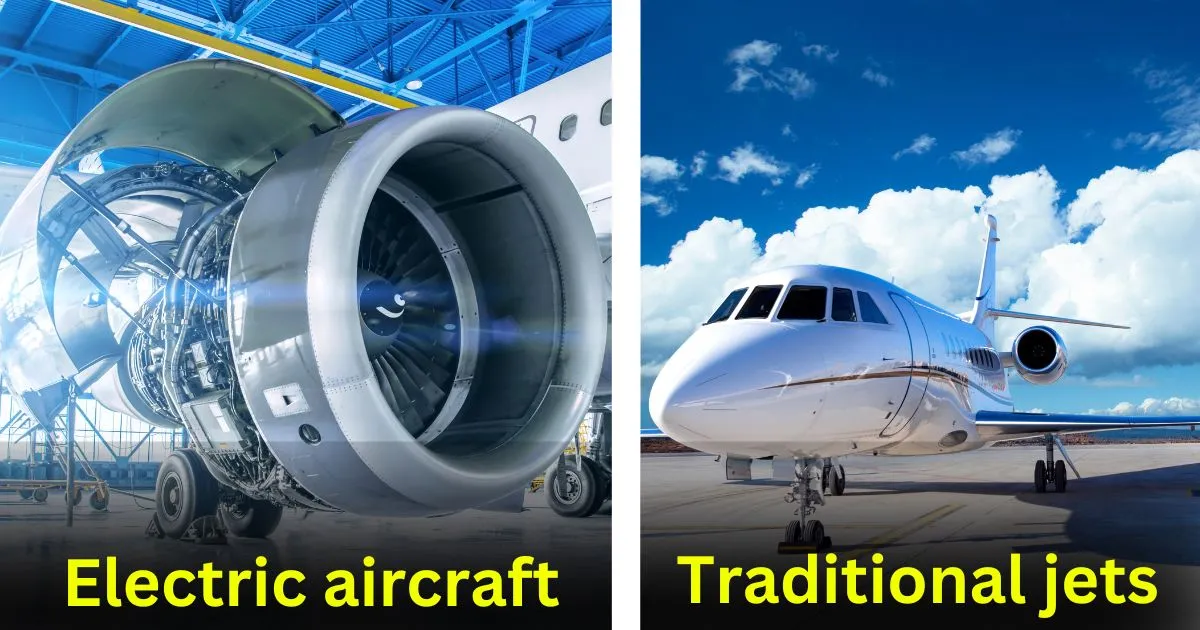Electric aircraft vs. Traditional jets As the world moves towards additional economical advances, the avionics business is at the front line of this change. Electric aircraft, with their commitment of decreased emanations and lower functional expenses, are turning out to be progressively suitable. Nonetheless, customary planes actually overwhelm the skies because of their laid out innovation and functional proficiency. This post will look at electric aircraft and conventional planes, inspecting their advantages, difficulties, and future possibilities to assist you with understanding the advancing scene of air travel.
Ecological Effect
Electric Airplane
- Discharges: electric aircraft produce zero tailpipe outflows. Their essential natural advantage lies in their capacity to diminish ozone harming substance outflows, especially when accused of environmentally friendly power sources.
- Commotion Contamination: electric aircraftwill quite often be calmer than customary planes, which can lessen clamor contamination around air terminals and metropolitan regions.
- Energy Source: The by and large natural effect relies on how the power is produced. Whenever accused of sustainable power, the natural advantages are augmented. In any case, assuming controlled by petroleum derivatives, the advantages are decreased.
Customary Planes
- Discharges: Conventional planes depend on petroleum derivatives and produce huge fossil fuel byproducts, adding to environmental change. The flying area is a significant wellspring of CO2 discharges universally.
- Commotion Contamination: Regular fly motors are stronger, adding to clamor contamination, especially in regions near air terminals.
- Energy Source: Customary planes use lamp oil based stream fuel, which is a non-inexhaustible asset. While biofuels and manageable avionics fills are being created, most of flights actually utilize regular powers.
Functional Proficiency
Electric Airplane
- Energy Effectiveness: Electric motors are for the most part more productive than conventional ignition motors. They convert a higher level of energy into push, which can prompt lower working expenses.
- Support: Electric airplane have less moving parts contrasted with conventional planes, possibly diminishing upkeep prerequisites and expenses.
- Range: Presently, electric airplane are restricted by battery innovation. They are the most appropriate for short-pull flights. Progresses in battery innovation might further develop range from here on out.
Conventional Planes

- Energy Productivity: Conventional planes have been upgraded over a very long time to accomplish elevated degrees of effectiveness, particularly for long stretch flights.
- Upkeep: While conventional planes require more support because of their intricate motors, laid out upkeep practices and framework are advanced.
- Range: Customary planes can cover significant distances without refueling, making them reasonable for global flights. Their reach is a critical benefit over flow electric airplane.
Cost
Electric Airplane
Introductory Expenses: The turn of events and creation of electric airplane include high beginning expenses because of cutting edge innovation and exploration. In any case, these expenses are supposed to diminish as innovation develops.
Functional Expenses: Electric airplane could have lower functional costs regarding fuel and upkeep. Power is by and large less expensive than fly fuel, and less moving parts might diminish support costs.Foundation Expenses: Critical venture is expected to assemble charging framework and backing electric airplane tasks.
Conventional Planes
- Starting Expenses: Conventional planes are deeply grounded with a wide scope of models accessible, which can offer serious estimating in light of economies of scale.
- Functional Expenses: Fuel costs for customary planes can be significant, and support is progressing because of the intricacy of stream motors.
- Foundation Expenses: Existing air terminals and backing framework are intended for customary planes, lessening extra expenses for carriers.
Mechanical Development
Electric Airplane
Innovation Preparation: Electric airplane are still in the improvement stage, with a few models and limited scope models going through testing. Full-scale business electric airplane are a couple of years from inescapable organization.Advancement: Electric airplane address state of the art innovation, with continuous exploration zeroed in on further developing battery duration, effectiveness, and reach.
Conventional Planes
Innovation Status: Conventional stream innovation is experienced and surely known. The business has created vigorous norms and practices over many years.Advancement: While the innovation is adult, continuous developments center around further developing eco-friendliness, diminishing discharges, and investigating elective energizes.
Future Possibilities
Electric Airplane
Headways: Proceeded with progressions in battery innovation, electric impetus frameworks, and sustainable power sources could improve the suitability of electric traditional jets.Market Potential: Electric traditional jets have critical potential for short-pull flights and metropolitan air portability. As innovation advances, they may likewise become reasonable for longer flights.
Customary Planes
Supportability: The fate of customary planes will probably include progressing to practical aeronautics energizes and further developing eco-friendliness to diminish their natural effect.Variation: Conventional stream producers are putting resources into green advancements and organizations to adjust to developing natural guidelines and market requests.
End
traditional jets and customary planes each have their assets and difficulties. Electric traditional jets offer a promising way towards lessening outflows and functional expenses, especially for short-pull flights and metropolitan air versatility. Notwithstanding, they are still in the improvement stage and face difficulties connected with reach and foundation.
Customary planes, while more settled and able to do long stretch flights, contribute altogether to emanations and face strain to take on additional reasonable practices. The fate of flight will probably include a mix of the two advances, with traditional jetsgaining ground in unambiguous specialties and conventional planes developing to meet natural objectives.As innovation advances and the avionics business keeps on developing, both electric and conventional traditional jets will assume fundamental parts in molding the fate of air travel.
previous post: Best Eco-Friendly Air Transportation Options for 2024
